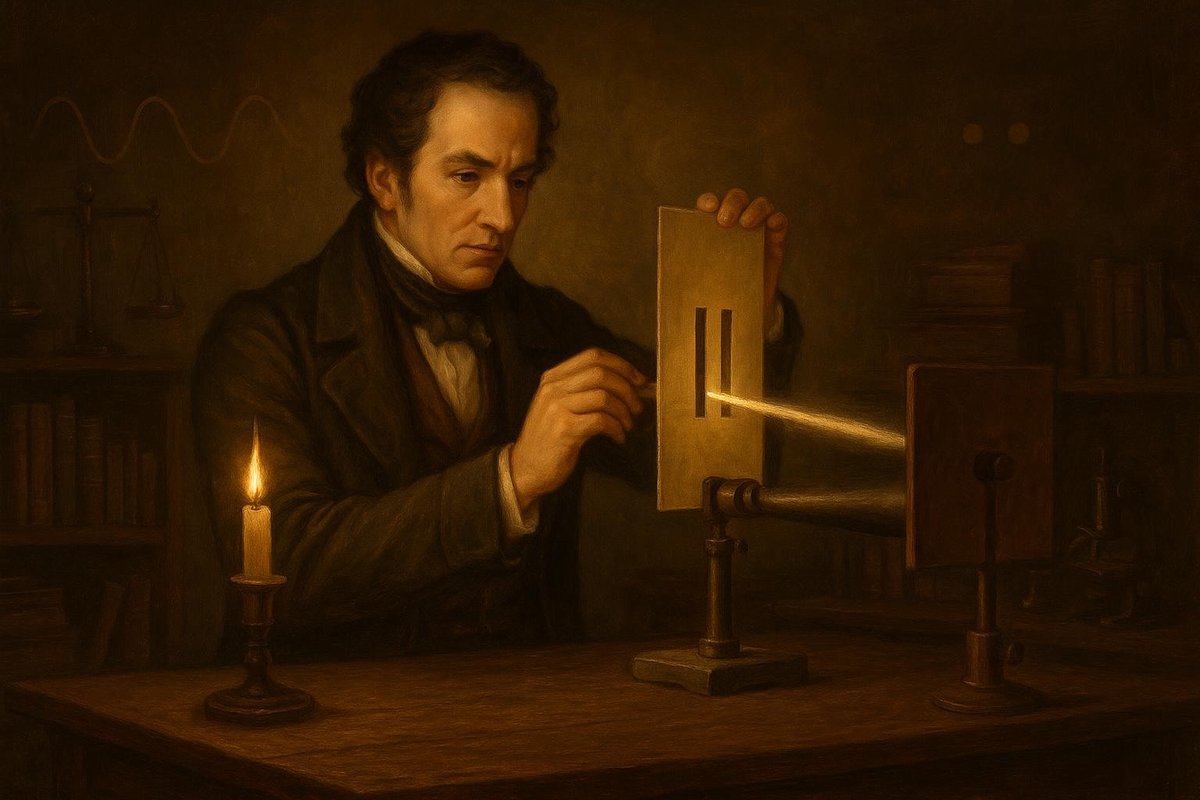
Introduction
Have you ever wondered how light behaves like both a wave and a particle? This paradox puzzled scientists for centuries. The answer came in the early 19th century when an English polymath named Thomas Young conducted a groundbreaking experiment. His Double-Slit Experiment would challenge the classical physics of his time and open the door to modern quantum mechanics. Let’s step back in time and see how a simple setup with light and slits could alter the course of science.
Hypothesis & Context
In the early 1800s, light was a mystery. Was it made of particles, as Isaac Newton proposed, or waves, as others like Christiaan Huygens suggested? Thomas Young, an ambitious scientist, was driven to solve this conundrum. He believed light was a wave and set out to prove it.
- Young hypothesized that if light was a wave, it should exhibit interference patterns.
- He aimed to demonstrate this by passing light through two narrow slits.
Young’s quest was driven by his desire to understand nature at a fundamental level. His intellectual curiosity and willingness to challenge established norms were key. This period was ripe for discovery, with the scientific revolution igniting new ideas and experiments. Young’s work was a natural progression in the era’s quest to understand the universe.
Setup & Method
Young’s experiment was elegantly simple. In a darkened room, he shone a beam of light at a card with two narrow slits cut into it.
- The light then passed through the slits and struck a screen placed behind them.
- The expectation was that the light would form two distinct bands if it behaved like particles.
However, what Young observed was astonishing. Instead of two bands, he saw a pattern of light and dark fringes, akin to water waves interfering with each other. This was the tell-tale sign of wave interference, suggesting that light, indeed, had a wave-like nature. It was an elegant demonstration of Young’s hypothesis, challenging the particle-centric view of light.
Results & Reactions
Young’s results left the scientific community in awe—and perplexed. The interference pattern he observed supported the wave theory of light.
- His results faced skepticism, especially from Newtonian traditionalists.
- Young’s clear demonstration, however, provided compelling evidence for the wave nature of light.
Young’s work was published in 1803, and slowly, his ideas gained traction. It took time, but his experiment became a cornerstone in the field of optics. The discovery was profound, as it laid the groundwork for future explorations into the dual nature of light and, eventually, the strange realm of quantum mechanics.
Implications
Young’s experiment did more than reveal light’s wave nature; it paved the way for quantum physics. The idea that light could behave as both a wave and a particle was revolutionary.
- It led to the development of quantum theory, changing how we understand the universe.
- His work demonstrated the importance of questioning established theories and exploring new ideas.
Today, the Double-Slit Experiment remains iconic in physics. It symbolizes the profound mystery of quantum mechanics—showing that particles can exist in multiple states simultaneously. Young’s legacy is a reminder of the power of curiosity and the importance of questioning the world around us.
In conclusion, Thomas Young’s Double-Slit Experiment was a pivotal moment in science. It challenged the status quo and ushered in a new era of understanding about the fundamental nature of light and reality itself.
Fuel Someone Else’s Curiosity
If this story of scientific discovery has piqued your interest, why not share it with others? Encourage someone else to explore the wonders of quantum physics and the brilliant minds that have shaped our understanding of the universe. Together, let’s keep the spirit of curiosity and discovery alive.

Leave a Reply